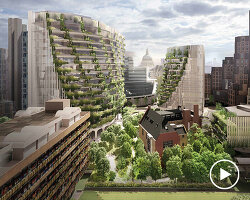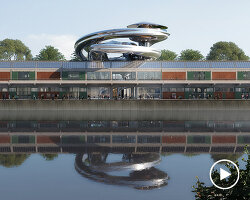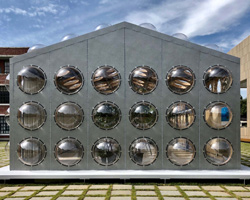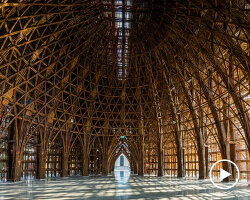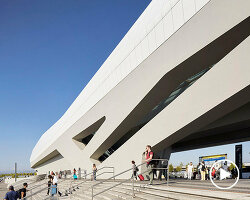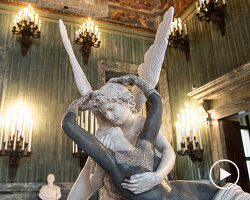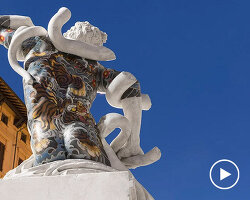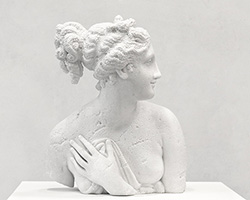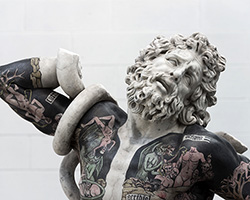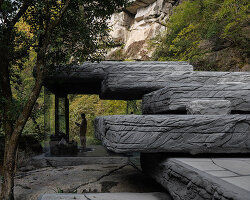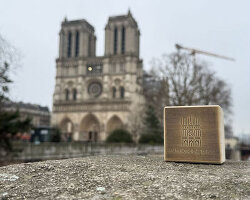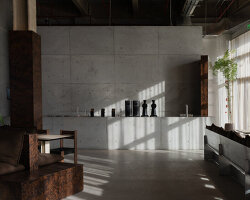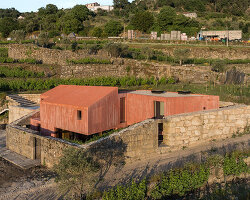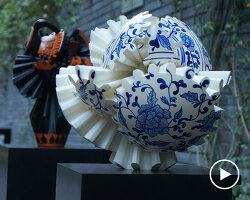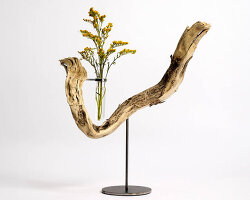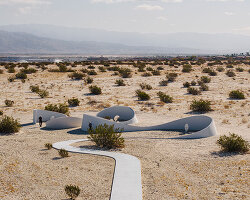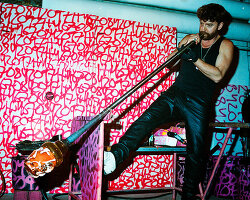italian artist fabio viale returns to florence with a solo show at galleria poggiali forconi entitled acqua alta/hide tide. the exhibition, which has been suspended because of the coronavirus pandemic, is due to reopen soon at the gallery’s premises in via della scala and in via benedetta. in one location the artist shows the bricole (wooden poles) while the other hosts ‘emergences’, a colossal installation of 15 tons of debris and about 10 tons of marble sculptures.
see fabio viale when he turns marble into polystyrene and rubber and when he tattoos classical marble sculptures.
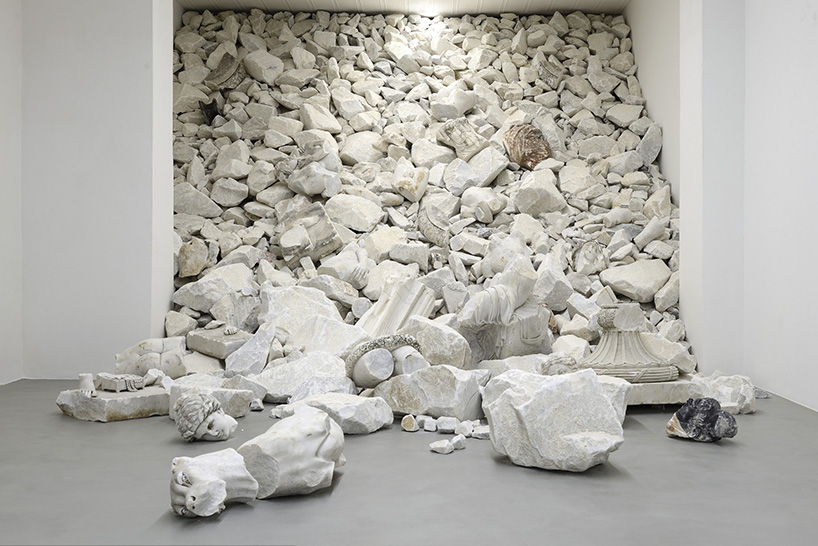
stone ‘emergences’ by fabio viale, solo show at galleria poggiali forconi, 2020
all images courtesy of the artist
set within the via benedetta premise of galleria poggiali, stone ‘emergences’ by fabio viale creates a highly dramatic tone inside the white space. inside, viale has dumped 15 tons of stone clippings and 10 of marble sculptures, almost filling the 15 meters of length of the gallery and its entire height. the work seen here is a transposition of the ROOT’LA performance held by the artist at the gioia quarry in carrara.
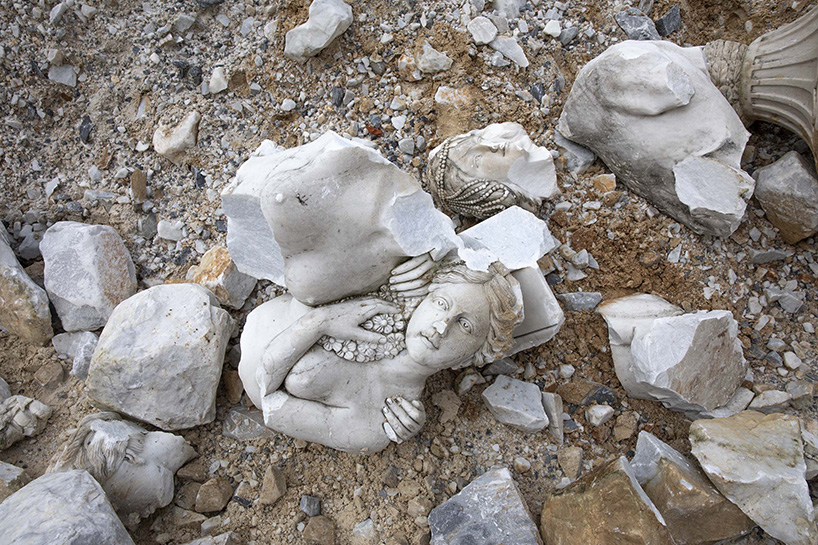
ROOT’LA performance at the gioia quarry in carrara
the performance ROOT’LA was held at a marble quarry deposit, where unusable and rejected material is traditionally cast downhill, creating a steeply sloping incline. for the performance, fabio viale reproduced this gesture, but instead, hurled down several marble statues, determining an action of a conceptual character. the action resulted in the statues suffering cracks and damages that changed their shape and mutilated some of its parts. the disfigured artifacts, rendered partially shapeless, were rescued and are the ones on show at the gallery.
‘michelangelo himself, in one of his writings, argues that rolling a sculpture downstream has the purpose of purging it from defects, as if each stroke, rather than destroying or ruining it, made it more perfect and powerful. for this reason, I wanted to use the ravaneto as a sculpture tool,’ explains fabio viale. ‘beyond the gesture, of pushing down a statue, I was especially excited to walk on the stones that are in this place: they are the result of the work of many men, they are full of history and poetry, and they made me perceive a strong energy.’
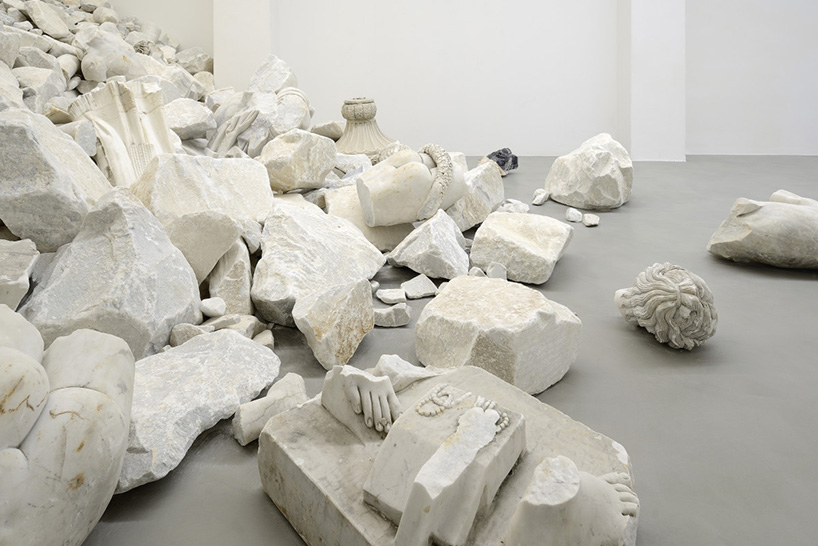
stone ‘emergences’ by fabio viale, solo show at galleria poggiali forconi, 2020
designboom (DB): how did the idea of the ROOT’LA performance come about, followed by the installation created for the galleria poggiali forconi?
fabio viale (FV): when you arrive in carrara and look up you see the marble quarries as snowy mountains. but it’s not snow, that is marble, it is the processing waste of thousands of stones. my idea was to go up one of those mountains with works and throw them down into the valley. the works, when they roll, when they fall downstream, are partly destroyed and partly altered and modified, becoming one with the mountain. it is difficult to distinguish the stone from a head and to me it’s a metaphor of our life too.
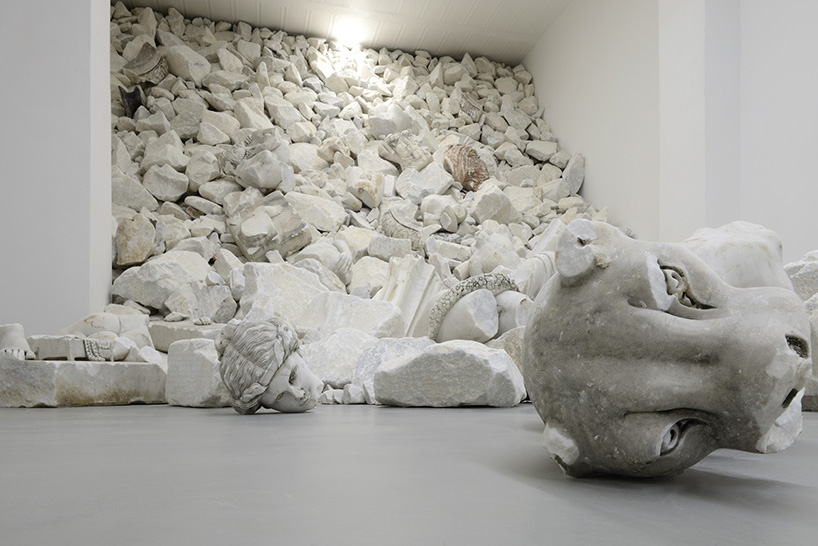
stone ‘emergences’ by fabio viale, solo show at galleria poggiali forconi, 2020
DB: for ROOT’LA did you create sculptures to be smashed?
FV: I had previously purchased the statues at a souvenir shop. I had chosen a copy of the three graces, an apollo, a guard dog, a fantastic nineteenth-century vase, the head of a moor and a dancer. the typology of the sculptures was deliberately varied, but also vague, I would say random. in fact, it was not important for me to focus on the individual works but more on their functioning as a whole. the installation appears as a three-dimensional mountain and, only at a certain distance, it is possible to distinguish the sculpture parts from the stones. it is as if the sculptures return to its root, marble stone.
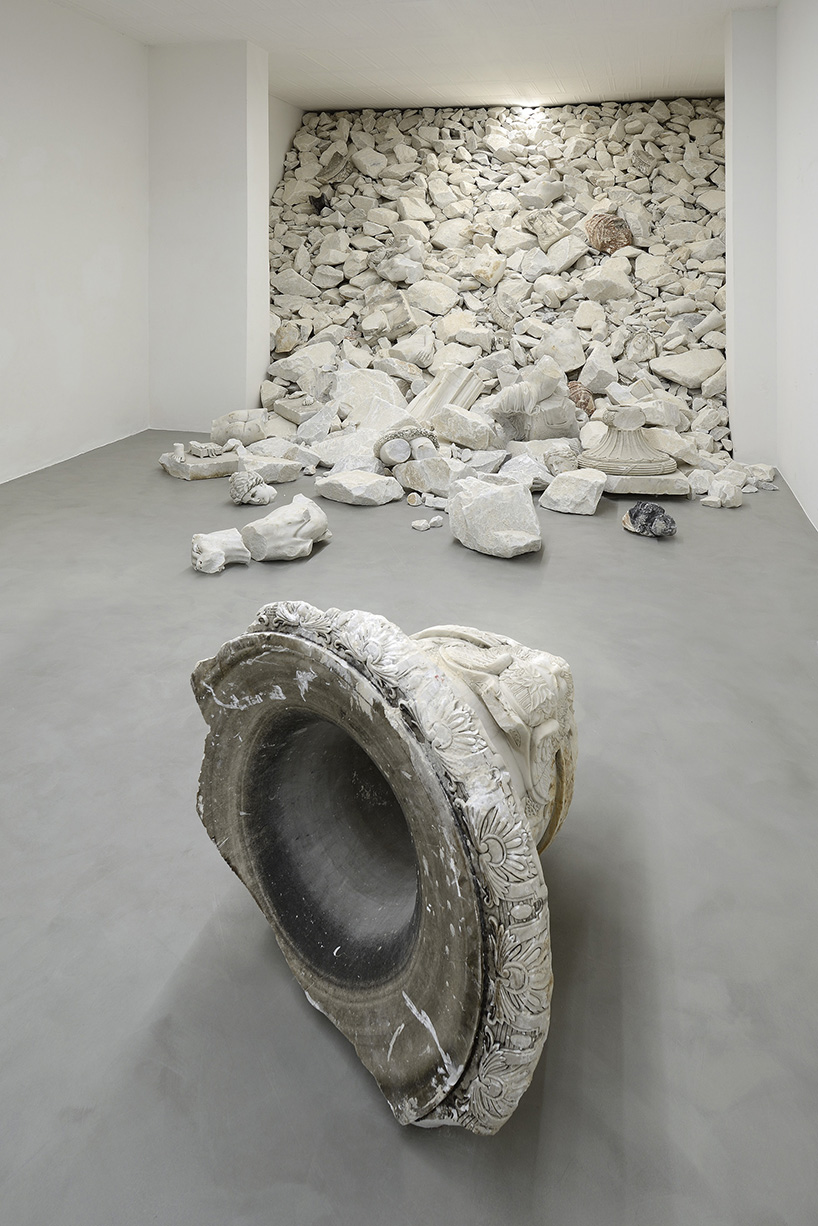
inside the gallery, viale recreates a portion of the ravaneto performance by positioning the stone clippings and damaged marble sculptures cascading from the ceiling into the floor. the long wave allows for observation, where visitors are able to recognize the sculptural forms. the scene therefore illustrates a process of decay and reconstruction, of fall and redemption.

ROOT’LA performance at the gioia quarry in carrara
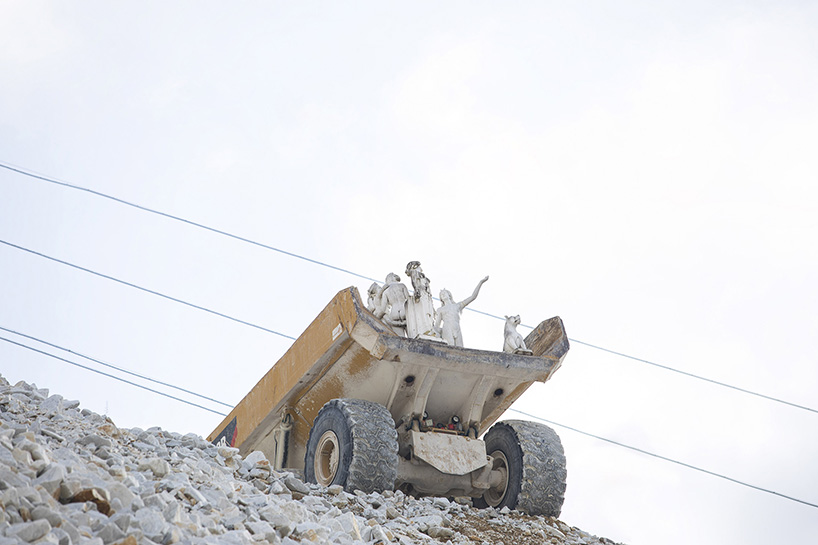
ROOT’LA performance at the gioia quarry in carrara
when sculptures roll and fall down the valley they break, they alter and become one with the mountain making it hard to distinguish the stone from the head of a marble bust.
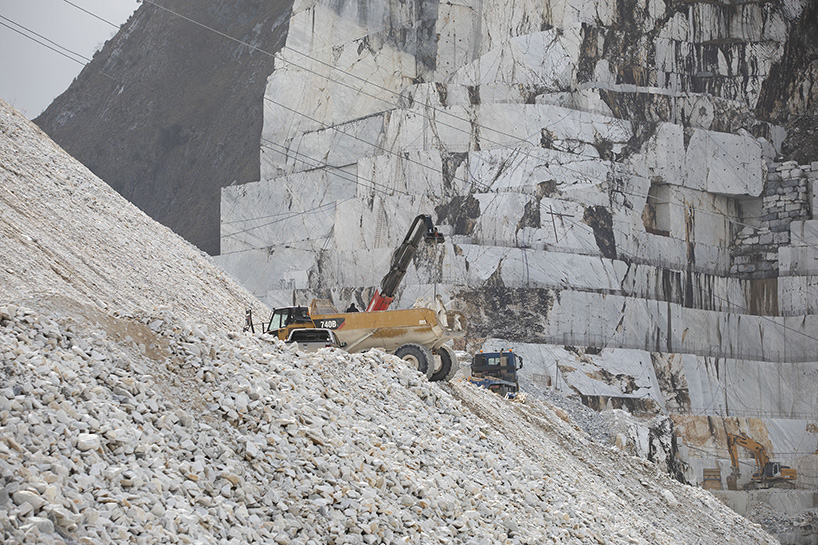
ROOT’LA performance at the gioia quarry in carrara
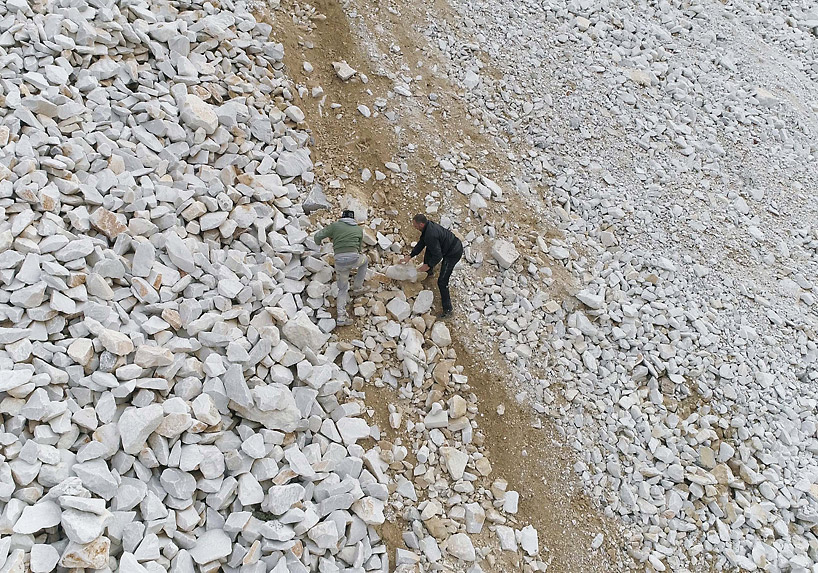
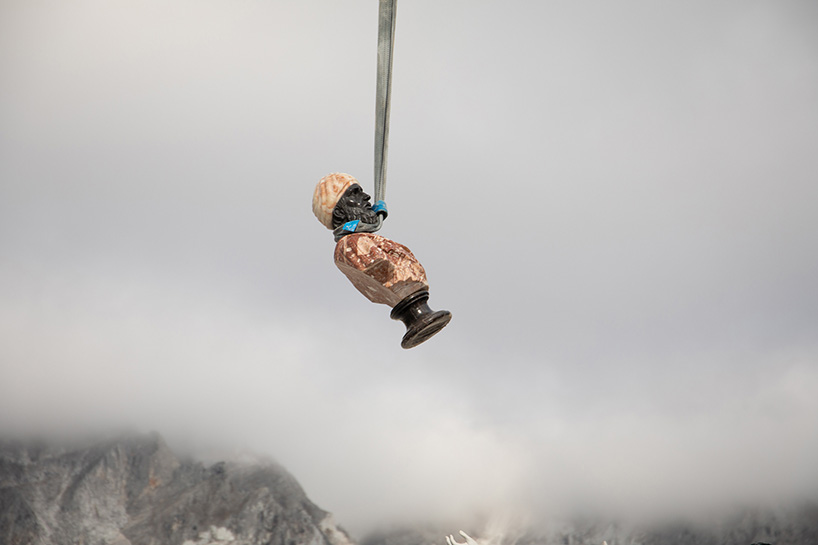
ROOT’LA performance at the gioia quarry in carrara
in the spaces of the headquarters in via della scala, however, a narration of the venice pavilion of the 58th art biennale has being created, in which the works of viale were among the protagonists: a dozen stone monoliths are exhibited at the poggiali gallery which replicate real size the ‘bricole’, the oak or chestnut wooden poles over three meters high that emerge in the venice lagoon and serve as signals for navigation.
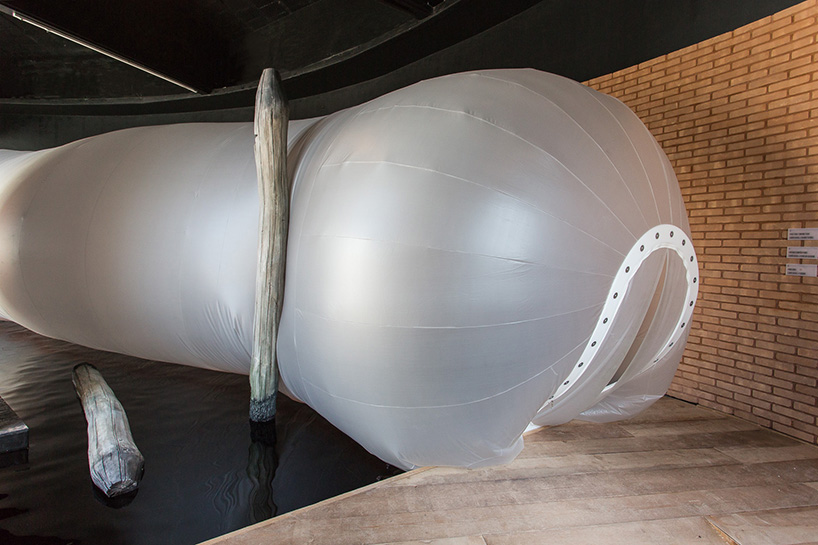
acqua alta / high tide exhibition by fabio viale at galleria poggiali forconi in florence, 2020
an additional element is that of high water (from which the exhibition takes its name), which has penetrated the pavilion in recent months due to the historic floods that hit venice; inside there were also fabio viale’s sculptures, promptly rescued and transferred to the museo novecento in florence. the high water, whose trace is symbolized by marks on the walls and damp sand on the ground, becomes for the artist the urgent denunciation of the climate change we are going through, the consequences of which do not spare anything or anyone.
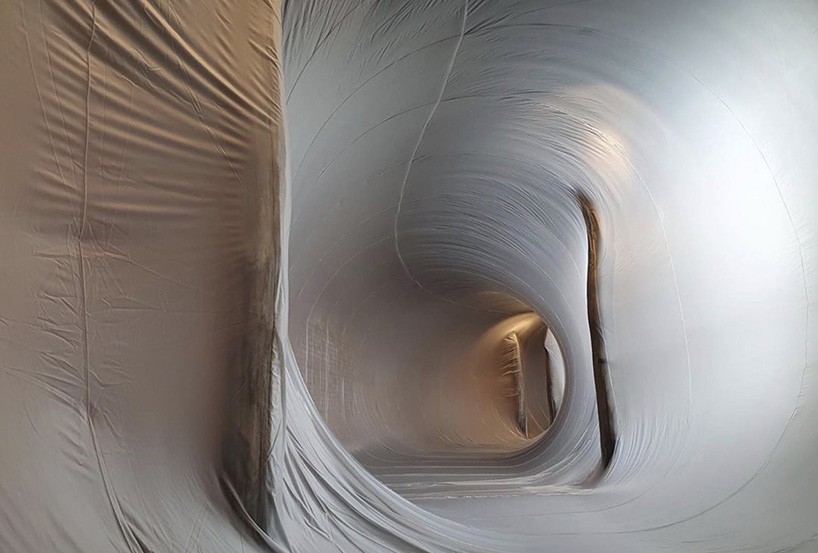
acqua alta / high tide exhibition by fabio viale at galleria poggiali forconi in florence, 2020
the show consists of around a dozen stone monoliths that stand as a life-size replicas of the posts, over three meters high made of oak or chestnut wood — the same that emerge above the water in the venice lagoon. known as bricole, they act as signposts for boats in the lagoon. the replicas by fabio viale imitate the wood so realistically that one could easily argue they are casts.
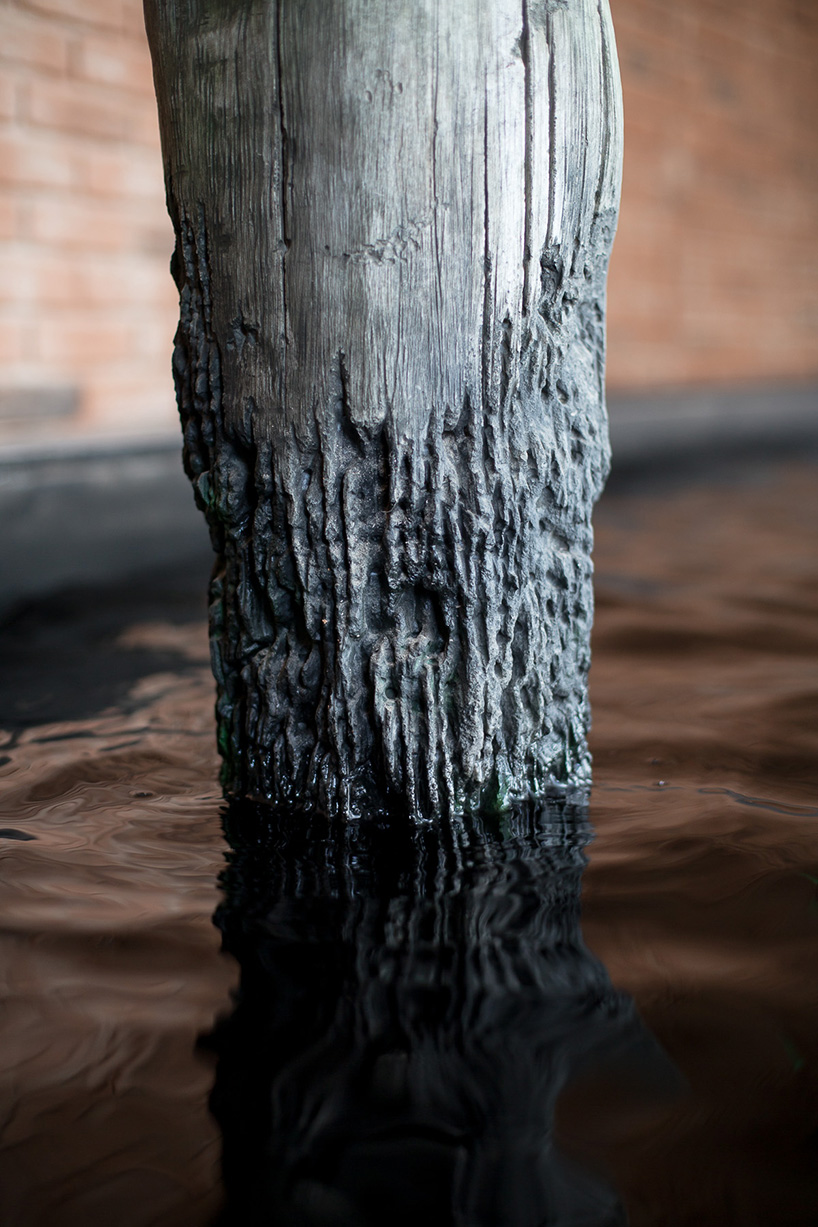
DB: the ‘acqua alta’ installation that you presented at the italian pavilion during the last edition of the venice art biennale proved to be anticipatory and visionary of what happened in venice only a few months later. recalling the fragility of the city and the climatic emergency of our planet. how did you contextualize the work in florence?
FV: unfortunately, the facts of venice were not new. the climate changes we are experiencing will lead us once again to face this type of emergency. in florence the sculptures are presented deprived of the ‘frame’, of that atmosphere inside the venice pavilion. the context was useful to be able to immerse the viewer. the sculptures become totemic, monumental and almost hieratic, and at the same time, the signs left by the water (at their base) make us think that the pieces are real.
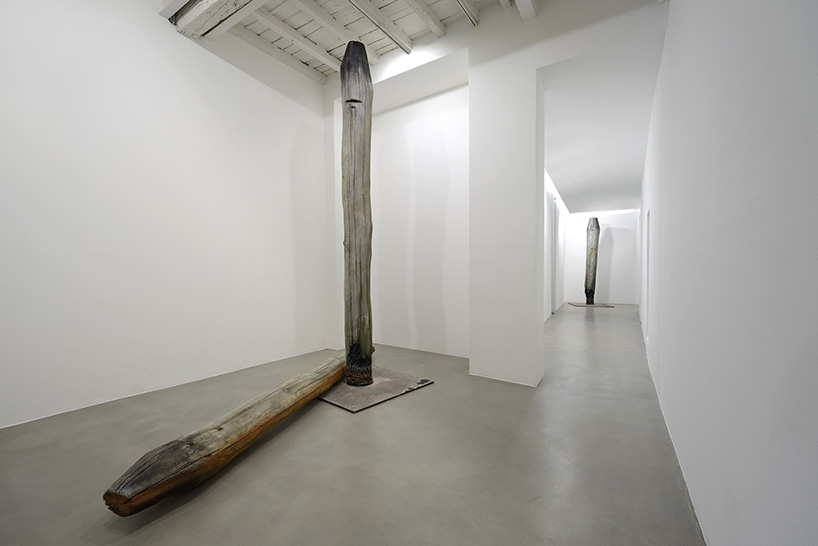
DB: for both, the florence flood and the high water of venice, the image that remains in our memory is that of damage to the artistic heritage. how much of this vulnerability is inside your work?
FV: I like the idea of using such a strong title (acqua alta / high tide), because it gives me the feeling of an emergency, almost a shortness of breath. on display, in addition to the ‘briccole’ that in some ways are the symbol, there is also another installation, ROOT’LA: a huge ‘ravaneto’ rebuilt in a gallery full of sculptural fragments, the consequence of a performance made a week earlier in the quarries of marble. the fall caused partial destruction and a sort of fragmentation. the result appears to be very similar to the greek and roman finds that we commonly see in museums.
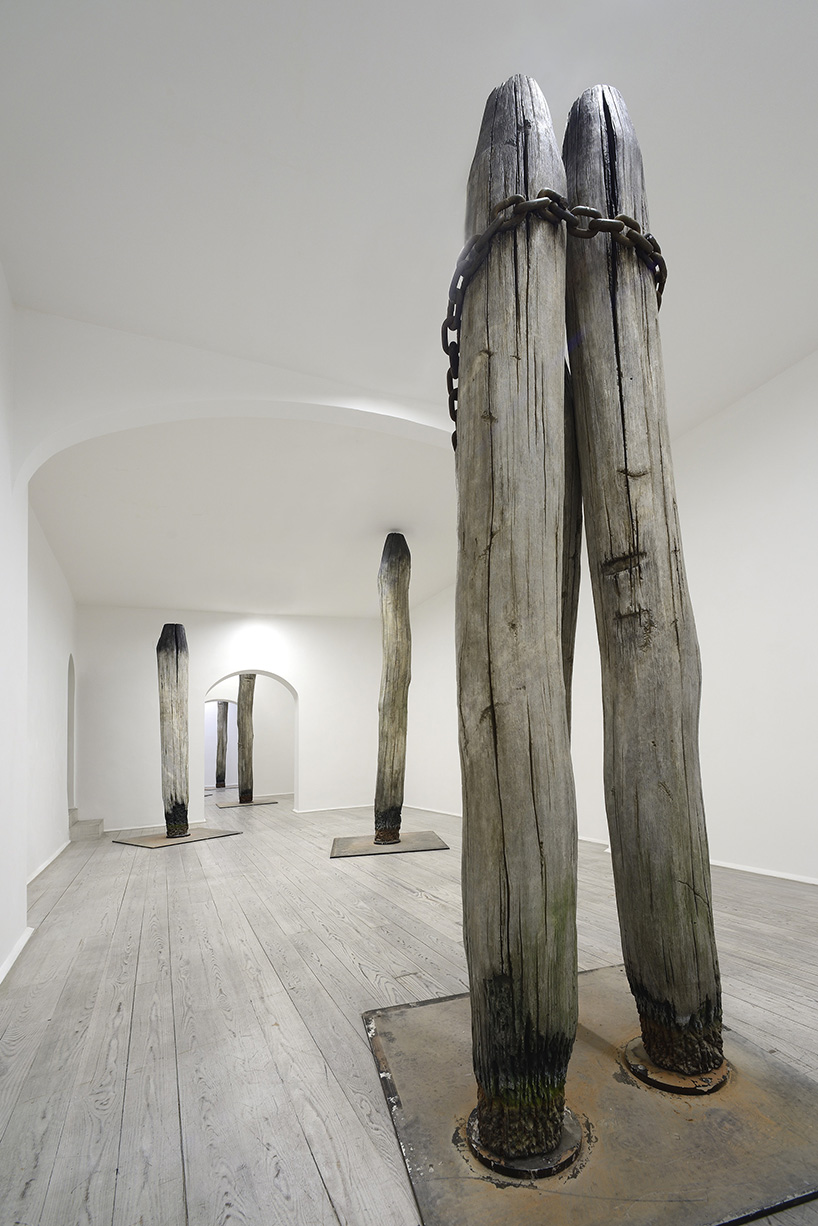
acqua alta / high tide exhibition by fabio viale at galleria poggiali forconi in florence, 2020
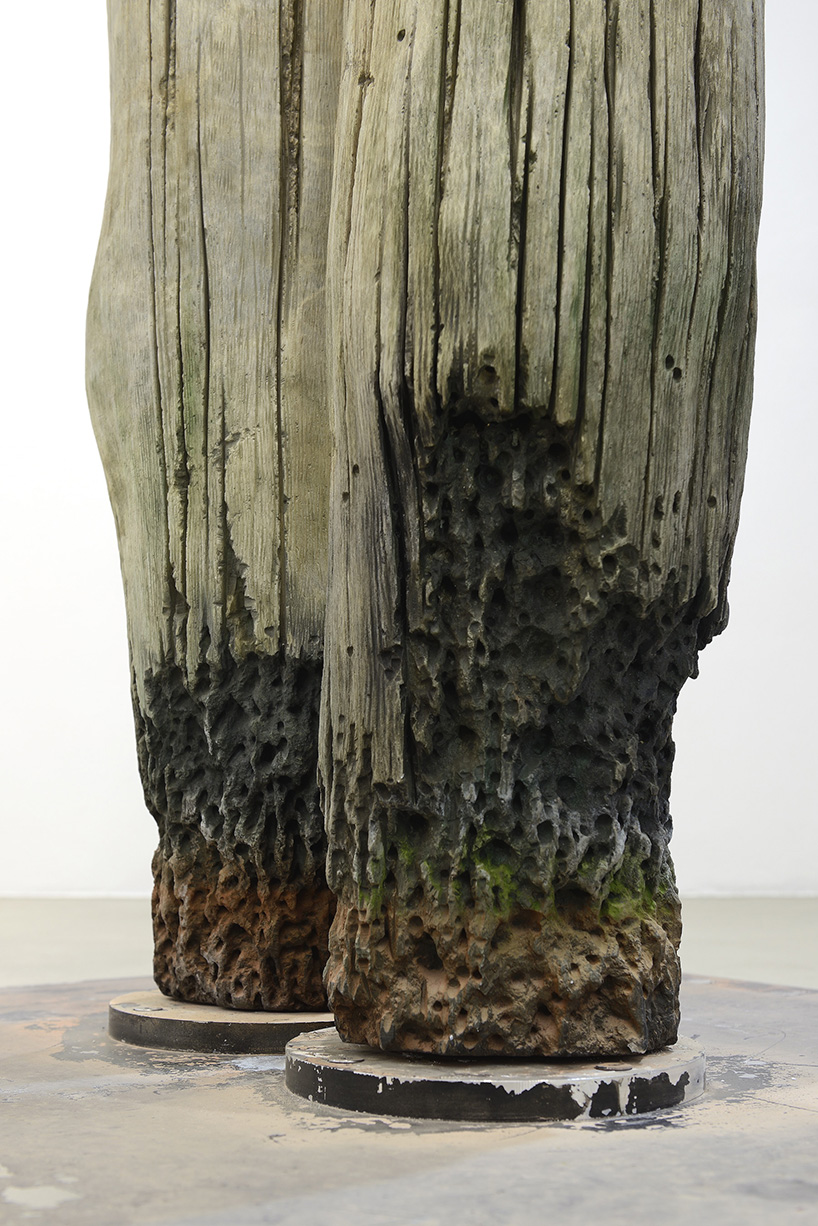
acqua alta / high tide exhibition by fabio viale at galleria poggiali forconi in florence, 2020
project info:
name: acqua alta / high tide
artist: fabio viale
dates: 22 february to 16 may 2020
location: galleria poggiali forconi, firenze
address: via della scala, 35/ar | via benedetta, 3r, 50123 firenze
webpage: www.galleriapoggiali.com
—
about fabio viale
italian artist fabio viale is undeniably an excellent marble sculptor.
born in cuneo in 1975, he hooked his life to marble at the age of 16, when he attended art school (the academy of fine arts in turin) and discoverd his passion for the material. he spent summers close to craftsmen to learn the secrets of the trade.
in adolescence he quickly gained fame in the craft sector and among some antique dealers. initially he produced architectural design components and statues for the monumental cemetery of milan, before starting an independent career as contemporary sculptor. the first few years fabio viale worked alone, now with some collaborators (mainly for the roughing phase).
his works arrived from italy to new york and russia. in 2013 he made his debut at sperone westwater in NY. a year later he won the cairo prize, the most important recognition for contemporary art in italy for having created the first fully functioning and floating marble boat. in 2015 he began a collaboration with the poggiali gallery in florence, which in 2016 led to an exhibition, for the first time in history, of two sculptures of contemporary art in one of the most famous churches in the world: the basilica of san lorenzo in florence.
